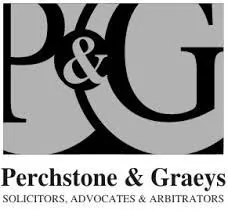The concept of bankruptcy should ordinarily carry a social stigma denying the bankrupt of credit, disqualifying him from holding certain elective and other public offices or from practicing any regulated profession. It is a connotation which most people would ensure they are not afflicted with. This otherwise effective debt recovery instrument as well as a tool against recalcitrant debtors, is rarely utilized in Nigeria. The reason for this lies in the legal framework governing the bankruptcy regime that clearly calls for reform.
It has been about twenty-nine years since the Bankruptcy Act and eighteen years since the Bankruptcy Rules came into force and yet these laws have made very little impact on Nigeria's debt recovery process. The procedure for rendering a company as opposed to an individual bankrupt (better known as insolvency proceeding), has enjoyed a relatively better degree of implementation than the Bankruptcy Act. The reason for this is that the framework for instituting and prosecuting insolvency proceedings is certainly direct and straightforward.
Bankruptcy proceedings unlike insolvency proceedings cannot be obtained in a primary action. In other words bankruptcy proceedings are only available to enforce the obligations of a debtor after such obligations would have been established in a separate judicial proceeding. The creditor will have to obtain a judgment against the debtor and such judgment notice served against the debtor. Should the debtor fail to respond to the notice, only then can it be considered to commit an act of Bankruptcy. This process is cumbersome and makes bankruptcy no more significant than the conventional modes of enforcing judgments like garnishee and fifa.
The legal position in Nigeria contrasts sharply with the position in England under the Insolvency Act of 1986. Under the English provisions, the creditor's right to present a bankruptcy petition against the debtor is not dependent upon the establishment of the debtor's obligation in a separate judicial proceeding. It is enough if the creditor alleges in the Petition that the debtor owes him a liquidated sum and that the debtor appears to be unable to repay the debt. The debtor is deemed to be unable to pay the debt if he fails to comply with the statutory demand notice to do so or fails to apply to set aside the notice at the expiration of 3 weeks after being served with the notice.
If the debtor disputes the debt, his application to set aside the statutory demand becomes the forum at which the question of his indebtedness will be investigated and determined. The debtor may raise a counter-claim, set off or cross demand to the creditor's claim or contend that he disputes the debt on a substantial ground and in this respect, he must satisfy the court by credible evidence that there is a genuine triable issue, he may set aside the statutory demand and thereby bring an end to the Bankruptcy proceeding. If on the other hand, the court is not satisfied, it will dismiss the application and make an Order directing the creditor to present a Bankruptcy petition.
The requirement that an act of bankruptcy is committed only when the creditor obtains final judgment or Order places severe limitations on the scope of application of the Bankruptcy Act. This limitation means that its (Bankruptcy Proceedings) application is entirely different from proceedings relating to the Insolvency of companies. This obviously places a distinction between personal and corporate insolvencies involving individuals and companies respectively. Hence from the point of view of an unsatisfied creditor wishing to initiate Insolvency proceedings, the question of whether his debtor is an individual or an incorporated company assumes a vital significance. The significance of the distinction, beyond the quantum of the assets ultimately available, is evident in the procedural and substantive steps to be taken. For instance, a creditor to whom a company and the company director are indebted may soon discover that whilst it may pursue the company and render it insolvent, that option of making the director bankrupt may just not be available. This is notwithstanding the fact that the corporate veil may be lifted and the director may have "embezzled" part of the assets
Though we copied a substantial part of the English Bankruptcy laws, the philosophical foundation of English Bankruptcy Law is still not been imbibed in Nigeria to the extent that the Act serves a number of beneficial purposes that have not been adopted. (It must be said that even as regards insolvency proceedings against companies, the relevant provisions that will assist the rescue of companies were not adopted). English law provides procedures aimed at relieving the debtor from the cumulative burden of debts which he has no realistic prospect of repaying and hence offer him hope for the future in the form of a fresh start consequent upon his rehabilitation. It is widely appreciated that the Bankruptcy law is designed in part to protect the honest but unfortunate debtor as well as discipline and if necessary punish the incompetent and dishonest debtor.
To this end the law (both in Nigeria and the United Kingdom) imposes certain constraints upon the conduct of the creditors and requires them to behave with a degree of propriety towards their debtors. The law provides them with the opportunity to initiate and invoke its machinery thereby affording themselves protection against improper pressures from creditors. Provided that his position is not already irretrievable, it is feasible for the debtor to have recourse to some form of solution that falls short of bankruptcy adjudication. The alternatives available are either formal or informal.
The formal alternatives to bankruptcy consist of various types of voluntary arrangements to be concluded between the debtor and his creditors that enjoy a legally binding force. Voluntary procedures of this kind may take the form of a composition or scheme of arrangement and they may be affected either under the Insolvency Act itself or under the Deed of Arrangement Act of 1914 or under the common law. Alternatively, a variety of less formal solutions may be employed in an effort to overcome a personal liquidity crisis, such as the rescheduling of debt payments by agreement with the creditors. This practice is also known as informal moratorium. This option however requires the total voluntary cooperation of the creditors as each creditor retains such rights and remedies available against the debtor under the law.
This distinction between the Bankruptcy Act and the Insolvency Act has been largely removed in England by the harmonization of the statutory provisions relating to winding up and bankruptcy under the Insolvency Act, 1986. Bankruptcy and winding up petitions are still being used under the Act for individual and corporate creditors respectively.
The importance of Bankruptcy laws is reinforced by the fact that directors and shareholders of a company may be faced with bankruptcy proceedings where they are found to be personally liable for the debt of the company. This is under the corporate governance rules that are unfortunately scattered in the Companies and Allied Matters Act and sundry legislation. In England some of these provisions have been incorporated into the Insolvency Act of 2002. An Act that somewhat removes the corporate veil of members of a company seeking refuge under the limited liability concept.
In an emerging economy fast growing, financial institutions will obviously extend credit to individuals as consumer loans. It is imperative that there is in existence an effective debt recovery system. This must be complimented with bankruptcy that serves as a powerful incentive for those who avail themselves of credit to behave responsibly and honestly towards their creditors. It is suggested that an overhaul of the basic framework of the Nigerian Bankruptcy proceedings be carried out to remove the impediments identified above which has reduced Bankruptcy proceedings to a mere secondary/ancillary procedure for debt recovery. (Published in BusinessDay Newspaper of Thursday, November 20, 2008)
The content of this article is intended to provide a general guide to the subject matter. Specialist advice should be sought about your specific circumstances.

